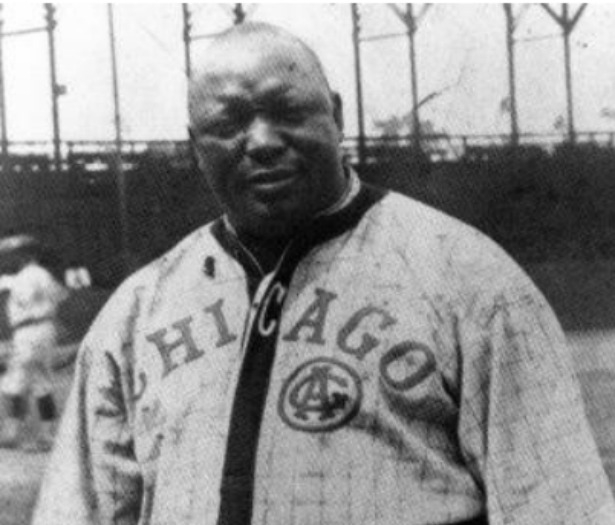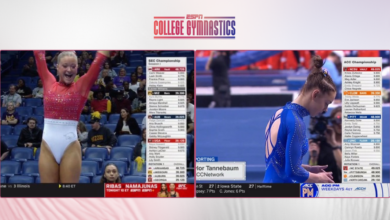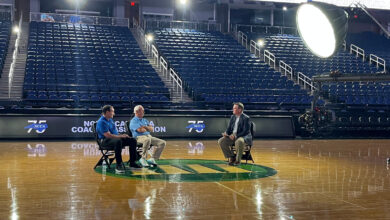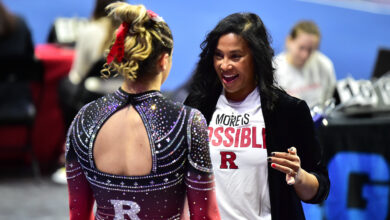“The Diary of Myles Thomas” examines baseball pioneer A.R. Foster

(Photo courtesy of National Baseball Hall of Fame Library)
A milestone entry from the 1927: The Diary of Myles Thomas project, the groundbreaking retelling of the 1927 New York Yankees through the new genre of real-time historical fiction, was released today. “A.R Foster and the Ride to Kankakee” is a story that deals with race, inequality and injustice. Most of all, it shines a light on a man who might be the most significant African-American in the history of baseball outside of Jackie Robinson: Andrew Rube Foster.
Douglas Alden, creator of the “Diary,” has been involved with ESPN since 1990 and recently rejoined the company as the project’s executive producer. Alden recently spoke with Front Row on the importance of the latest diary entry.
- 1900s: “He was regarded as one of the game’s greatest players – up there with Walter Johnson and Christy Mathewson.”
- 1910s: “He was a player-manager and was so highly thought of that John McGraw, the great New York Giants manager, would go to watch Foster’s practices.”
- 1920s: “Foster’s vision, and his courage in the aftermath of the horrible race riots in Chicago, led him to create and run the Negro National League – the first successful black baseball league, which sowed the seeds for Negro baseball throughout the country.”
Summarize the significance of Andrew Rube Foster.
Andrew Rube Foster is probably one of the most important figures in the history of baseball — black or white — and my guess is that many, even those who live their lives steeped in sports, have never heard of him.
Sadly, this speaks to one of the key tragedies of the black experience in America — institutional racism has erased so much of black history and black heroes. And Foster’s story is a classic example of that. Here’s a great man who most historians consider second only to Jackie Robinson with regard to being the most significant African American in the game. And, yet, his life is practically unknown.
As a player, Rube Foster was as great as anyone except perhaps Babe Ruth; as a manager he was the equal of John McGraw; and as an executive he was as powerful as Kennesaw Mountain Landis.
Not only is it an amazing sports story, but it simply can’t be emphasized enough how, before Jackie Robinson, Negro baseball was a remarkable example of the abilities, skills and courage of African- Americans that completely cut against the grain of the racist Jim Crow narrative. And Rube Foster was the driving force behind it.
But the end of Rube Foster’s life was truly tragic and lonely.
That’s why I wanted Myles Thomas to tell Foster’s story.
Alden: “Rube Foster started the Negro National League in Kansas City, at a meeting at the Kansas City YMCA. And Kansas City is where the Negro League Baseball Museum is today. That’s one of the very few places you can be guaranteed that somebody knows Andrew Rube Foster’s story.”
Describe how this story fits in with the overall themes of “The Diary of Myles Thomas” project.
The diary is a very intimate journey through the overlapping worlds of baseball, jazz and Prohibition — worlds that truly did come together in 1927 — and a big part of the overlap of baseball and jazz has to do with race and sex in America.
Myles Thomas’ views of race evolve throughout the 1927 season, and this entry is a crucial moment in that evolution, as is the smoke-filled night he spends with Louis Armstrong (“Pops and the Babe“).
What is one past diary entry you would recommend for someone who is just beginning with the project and why?
I think the diary entry about the friendship between the Yankee starting pitcher, Urban Shocker, and the team’s young mascot, Eddie Bennett, in “Urban and Eddie” is pretty unbelievable—but it’s all true—and readers have been tremendously touched by their story.







